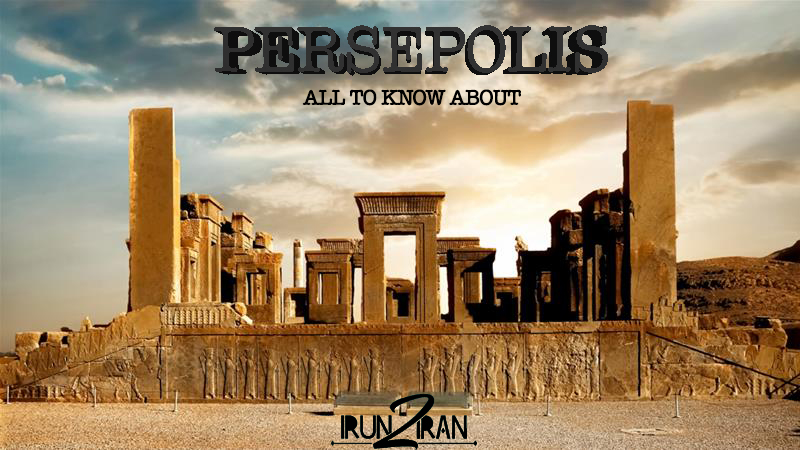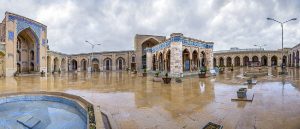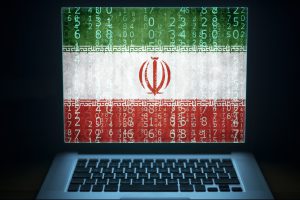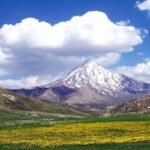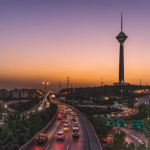Persepolis is one of the world’s greatest archaeological sites well-known as the gem of Achaemenid ensembles in the fields of architecture, construction technology, urban planning and art.
Traveling to mythical places is always exciting and even more if you are fond of history, Persepolis is a monument that makes you really excited. It will be hard to find a place like this where you can witness the remnants of a prominent ancient civilization.
Here in this article, we tell you all the essential information you need to know about visiting Persepolis, an important monument that you should include in any tour of Iran.
You read these topics respectively:
- Is Persepolis Worth Visiting?
- The Opening Hours of Persepolis
- How to Get to Persepolis?
- How much time Do I Need to Visit Persepolis?
- When is the Best Time to Visit Persepolis?
- What Should I Know for Visiting Persepolis?
- How Much is Persepolis Entrance Fees?
- Short History of Persepolis
- Why was Persepolis Built?
- What is the Meaning of Persepolis?
- Who Destroyed Persepolis?
- Persepolis, a UNESCO Registered World Heritage
- Persepolis Architecture
- Gate of All Nations
- Apadana, the Audience Hal of Persepolis
- Tachar, Palace of Darius
- Hadish, Palace of Xerxes
- The Hundred Column Palace
Persepolis Architecture
Tombs
As well as the tombs in Necropolis, there are two tombs and an unfinished tomb carved on the Mount Mehr in the south of Persepolis. The tombs belong to the Achaemenid emperors, Ardashir II and Ardashir III. The unfinished tomb is attributed to Darius III.
Inscriptions and Stone Carvings
The archeologists recently discovered hundreds of slabs and carved stones at the Tachara Palace in Persepolis. Those stone inscriptions were discovered during the fifth season of the archaeological excavation done to identify the waterways in Tachara Palace. The plant patterns, human drawings as well as cuneiform writing are engraved on the stone pieces.
This discovery sheds light on the design of the north facade of Palace H as one of the most difficult archaeological issues of Persepolis.
Persepolis Museum
Persepolis Museum is located in an Achaemenid Palace. This building once was a destroyed palaces in Persepolis built about 2500 years ago by the Achaemenid kings. It was originally built by the order of Xerxes containing a main hall and a large number of rooms and corridors used as a harem. The doors are decorated with motifs of Xerxes and the king’s battle with lions and monsters. The color of walls is red to resemble the original decorations.
During the contemporary excavations, it was initially renovated by Professor Herzfeld to keep the discoveries of Persepolis like the inscriptions, pottery, burnt curtains and important documents.
The current objects in the museum belong to three eras before Islam, after Islam and the Achaemenid era. A very interesting object is a part of the burnt curtain of Persepolis remains from 2500 years ago.
Gate of all Nations
The Gate of All Nations as the entrance cannot be more scenographic. Just imagine the impact it had on visitors in the glory days of Persepolis. It consisted of a grand hall and entrance on the Western Wall. There were two more doors, one to the south which opened to the Apadana yard and the other opened onto a long path to the east.
To reflect the power of the empire, gigantic figures of more than five meters high received the visitor to Persepolis. A pair of lamassus, bulls with the heads of bearded men, stand by the western threshold. The lamassus is a winged celestial genius of ancient Mesopotamia. Its mission was to scare away evil spirits and demons who wanted to enter the city.
The name of Xerxes I was carved in three languages: the Elamite, Persian and Babylonian informing that it was built in his order. One of the phrases says:
“I am Xerxes, the great king, king of kings, the king of the peoples with numerous origins, the king of this great land, the son of King Darius, the Achaemenid.”
Apadana, the Audience Hall of Darius
Apadana was the largest building on the Terrace at Persepolis and was excavated by the German archaeologist Ernst Herzfeld. It was most likely the main hall of the kings where they received the tribute from all the nations and gave presents in return.
Seventy-two 20m high columns crowned by gigantic capitals in the shape of bulls or lions hold the roof of Apadana.
Here you will find the most beautiful and best-preserved part of Persepolis. One of the must-sees is the stairs to the Apadana. The north and the east monumental stairways provided access to the hall. Those are decorated by reliefs, showing delegates of the 23 subject nations of the Persian Empire paying tribute to Darius I. The beauty of these reliefs is that they are like a photograph on stone. Thanks to these reliefs we know about the dress and hairstyle of Medes, Elamites, Libyans, births, Ethiopians, Aryans, Armenians, Assyrians and so on up to 23 nations.
Tachar, Palace of Darius
Tachar stands back to the Apadana was the palace of Darius the great. It was constructed of the finest quality gray stone. Although its mud block walls have completely disintegrated, the enormous stone blocks of the door and window frames have survived.
Like many other parts of Persepolis, the Tachar has reliefs of tribute-bearing dignitaries. Here you can see one particular bas-relief, a lion biting a bull, the passage from winter to spring or the symbol of Nowruz.
There is also a bas-relief at the main doorway depicting Darius I crowned and adorned with jewelry.
Hadish, the Palace of Xerxes
Darius’s son didn’t want to be less, so he built a palace larger than his father’s, called Hadish after the name of his wife. The private palace of Xerxes is located on the highest part of Persepolis.
The fire was likely started from this place due to the hatred the Athenians had for Xerxes. The yellow color of the rocks indicates that the water inside those has run out.
There is not much information about this palace and it remained as a mysterious place. The only relief remained here is the one in which Xerxes appears in a procession.
The Hundred-Columns Palace
The second Persepolis palace is a magnificent monument in the east of the Apadana courtyard that is called the Throne Hall, the Imperial Army’s Hall of Honor or the Hundred-Columns Palace. Its doorways are decorated with reliefs of throne scenes and scenes depicting the king in combat with monsters.
According to the evidences found by Herzfeld, the construction of this very important Hall began by Xerxes I but completed by Artaxerxes I.
Naqsh-e-Rustam
Naghse Rostam that is located near Persepolis contains four great Achaemenid kings’ tombs namely Darius the Great, Xerxes, Ardashir I and Darius II. Moreover, there are historical inscriptions and bas-reliefs from the Elamite and Sasanian era.
Pasargadae
The ancient Pasargadae city dates back to the Achaemenid period. The most famous building in Pasargadae is considered to be the ziggurat-shaped tomb of Cyrus, the Great that is a stepped architecture. According to historical sources and travelogues, the tomb of Cyrus was located in a garden in the antient Pasargadae city.
Is Persepolis worth visiting?
Persepolis is the most famous landmark near one of the most visited cities in Iran, Shiraz. Visiting Persepolis is definitely worth it and it is no wonder that great number of people do so daily as a unique lifetime experience!
Current Persepolis is the remnant of the well-known Empire, the Achaemenid. When visiting this great gem, it will be inevitable for your imagination to be busy all the time with figuring out how impressive this emperorship must have been.
You will perceive the magnificence of Persepolis as soon as you find yourself facing its imposing walls, climbing the elegant symmetrical entrance stairs, pass the gigantic pillars and look at the patterns on the walls. Through those the rulers from all over the world entered the palace to pay tribute to the King of Kings.
When you stand in front of Persepolis and think that it was built in 521 BC, you begin to ponder it is a miracle that after so many centuries the towering columns remained upright. Winning the challenge to the gravity, earthquakes and the passage of time, those pillars have no less than 20 meters.
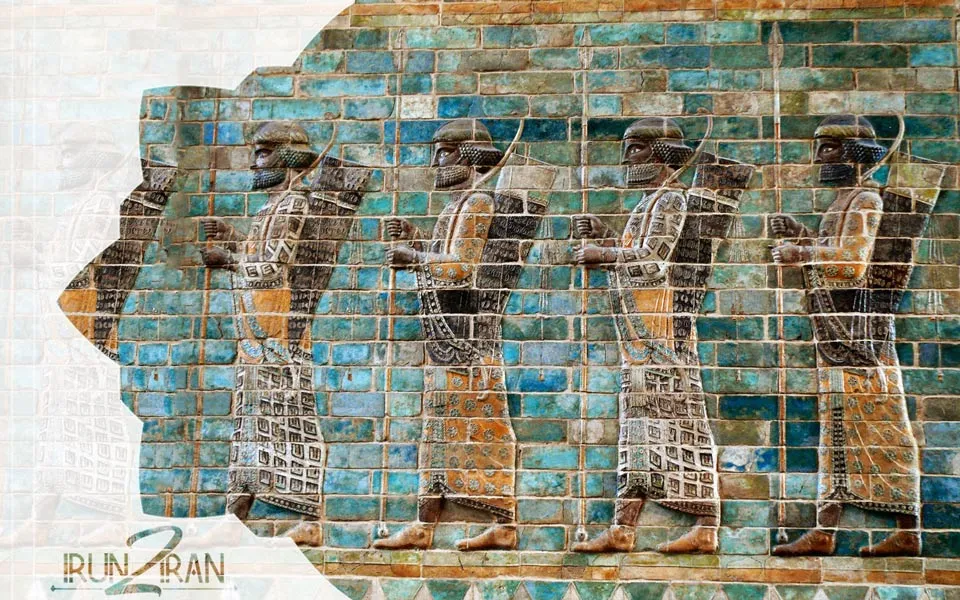
When to visit Persepolis
Due to the weather conditions of Iran, the best time to visit Persepolis is all year round. However, to speak specifically, during the pleasant months of October to May, you can have a comfortable exploration of this incredible monument ruins. During June to September, it is advisable to be equipped with shade and enough water to avoid dehydration.
Except Nowruz that is the peak tourist season for Persepolis, the rest of year you can enjoy a less crowded experience in the UNESCO World Heritage Persepolis.
Sites to Visit in Persepolis and Surrounding Cultural Landscape
The Achaemenid empire legacy in Fars province are several historical remnants near Shiraz including Persepolis, Necropolis, Pasargadae, Naqsh-e Rajab and a few more.
Most cultural Iran Tour Packages include Shiraz, allowing travelers to explore gems like Persepolis, Hafez’s tomb, and the colorful Nasir al-Mulk Mosque.
The Opening Hours of Persepolis
Persepolis is open from 8:00 am to 5:30 pm every day except 6 defined holidays.
4th of June is Iran Islamic leader death, Ashura, Tasua, Imam Ali martyrdom, Imam Jafar martyrdom, and Prophet Mohamad martyrdom.
How much is Persepolis Entrance Fees?
The entrance to Persepolis costs 500,000 IRR.
If you also want to visit the Persepolis museum it will cost you another 200,000 IRR.
How to get to Persepolis?
Persepolis is located about 70 km from Shiraz. It takes an hour more or less to reach. The best option to visit Persepolis is by private car or shared tours.
Visiting Persepolis with a guide who explains all history and parts of the city makes your visit alive, so go with someone to explain what’s more than just the ruins.
The best option to reach Persepolis is by private car or shared tours that cost €30 (two pax) for a round trip.
It is suggested to combine visiting Persepolis with Naqsh-e Rustam and Pasargadae. Visiting Persepolis along with Naqsh-e Rustam and Pasargadae costs €60 (two pax).
Persepolis is located at the road to Yazd and Isfahan. If you are on your own vehicle, it is a good opportunity to visit this monument en route.
Contact us to ask questions about Persepolis or book a tour guide.
How Much Time Do I Need To See Persepolis?
A visit to Persepolis, typically requires a minimum of three to four hours to fully visit the numerous historical ruins and architectures. Therefore, our daily tours to the two UNESCO World Heritage sites of Persepolis and Necropolis are a half-day excursion.
Persepolis accommodation
The best option to accommodate near Persepolis is a hotel or hostel in Shiraz from where you can take a taxi or tour to visit Persepolis.
What should I know For visiting Persepolis?
- Have enough water with you specially if you will be there in the warm months.
- Keep in mind that it is not allowed to enter with a backpack or bag. If you have one, you will be asked to leave at the box office.
- Use sunscreen cream, take hat or umbrella and sunglass.
- Read about the history of the ancient Persia beforehand. It will enrich your visit and you can talk to your guide not just listening to information.
- Don’t forget to have camera with you.
- If you are solo female read this article about solo female traveler in Iran.
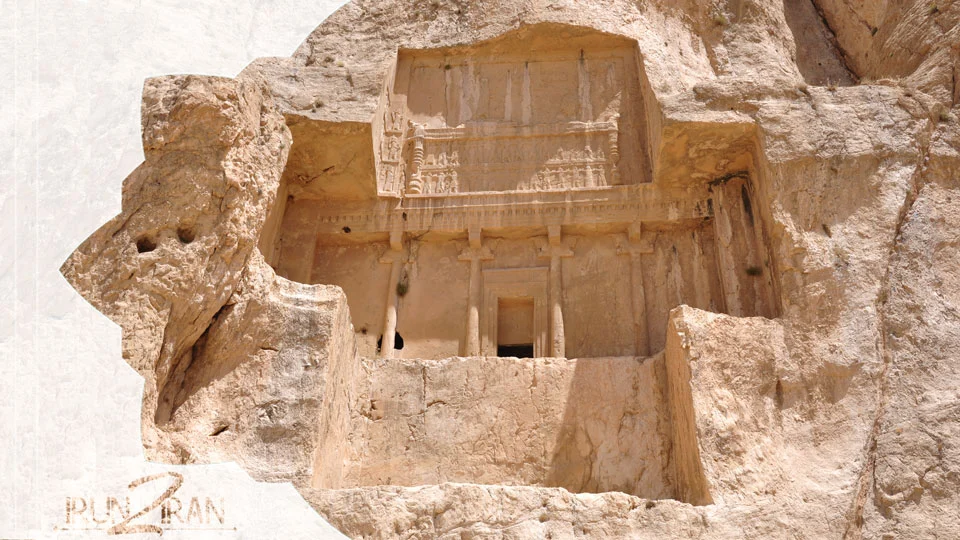
Short history of Persepolis
Based on the findings of excavation teams, the earliest remains of Persepolis date back to 515 BC (almost 2500 year ago); when Cyrus the great chose its location at the foot of Kuh-e Rahmat (Mountain of Mercy). However, the Terrance was built by Darius I and some believe it took 120 years to finish this construction.
To understand Persepolis, it must be placed in its historical framework. Its founder, the one who planned the construction of a city that represent the emperorship of the Achaemenids, was Darius I the Great, the King of Kings. His son Xerxes I and his grandson Artaxerxes II continued the construction in Persepolis by adding more palaces throughout the golden age of the Persian Empire.
Part of a vast program of monumental constructions focused on emphasizing the unity and diversity of the Achaemenid Persian Empire, the legitimacy of royal power and showing the greatness of their kingdom. Many bas-reliefs sculpted on the steps and gates of the palace represent the diversity of the towns that made up the empire. The multiple royal inscriptions in cuneiform writing of Persepolis are written in ancient Persian, Babylonian or Elamite. They are recorded in several places on the site, intended for the same purposes and specify which kings ordered the erection of the buildings.
Numerous archaeological expeditions have allowed us to better understand the structures, their original appearance and the functions they fulfilled.
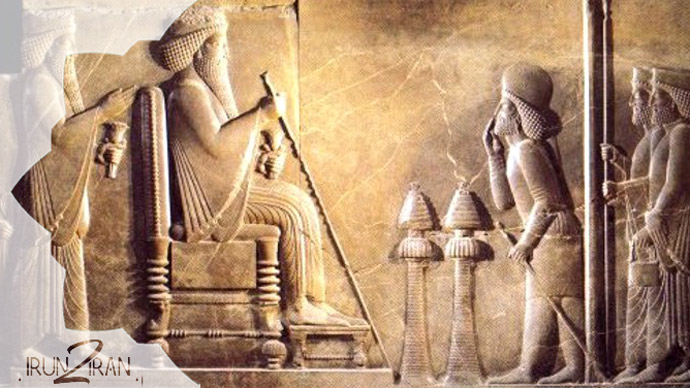
Why was Persepolis built?
Herzfeld believed that Persepolis was made for special ceremonies, most importantly Nowruz or Persian new year that is still celebrated. But to understand why this city was built, you need to go back much earlier in time.
When the Achaemenid king Cyrus II died, his eldest son Cambyses II succeeded him. He was on the conquest of Egypt, when his little brother, Bardiya, the governor of one of the Persian provinces that are now in the territory of Afghanistan, rose against him. Cambyses murdered his brother and himself was killed by an infected leg wound.
Seven Achaemenid nobles discussed the fate of the empire by choosing the new king. Among them was Darius I, united by family ties to the Achaemenid dynasty (Cyrus was his great uncle). They gathered outside the palace, mounted on their horses at sunrise, and the man whose horse neighed first in recognition of the rising sun would become king. Darius’ horse was the first and it was the sign that Ahura Mazda, god of Zoroastrianism, the creator of the world, wanted to designate him as the future king of Persia.
At the time of Cambyses’ death, the Achaemenid Empire was stronger than ever, reaching from Cyrenaica to the Hindu Kush, and from the Syr Darya to the Persian Gulf. To convoy his power to all the nations in the vast territory, Darius needed an impressive capital. This is how Parsa – the city of the Persians – was built to convey the power of the Achaemenid empire to its subject nations who presented gifts to the king there. Many bas-reliefs sculpted on the steps and gates of the palace represent the diversity of the towns that made up the empire.
The city, in addition to being a political and administrative center, was the place where the satraps (the representatives of the provinces of the empire) came to deliver their tributes in the ceremonies of the Persian New Year, Nowruz. The great Apadana of Persepolis could welcome up to 10,000 guests.
What is the meaning of Persepolis?
Persepolis meaning the Persian city is the Latinized version of the Old Persian name “Parsa”.
This name – Parsa – is known because it appeared on the clay tablets found there and literally means the “city of Persians”.
Persepolis is also known as Thakht-e Jamshid (throne of Jamshid). Jamshid was the first, probably mythical, ruler of Iran.

Who destroyed Persepolis?
Artaxerxes III, was the last Achaemenid king, then a Macedonian with a thirst for revenge arrived, Alexander. The flames of Alexander’s revenge and envy in 330 BC destroyed Persepolis.
There are some theories explaining why he made such decision; either it was his personal revenge since in the second war Xerxes ordered to burn Athens. Another theory says that after Alexander conquered Persepolis, he had a big party and as he was completely drunk, he did not hesitate to throw fire everywhere.
It doesn’t matter what motivated Alexander to set it on fire, but here the glory days of this imposing city ended. Persepolis was buried in the forgetfulness of time until 1931, when the archaeological missions began digging up the ruins of the ancient empire.
Its last glory was in 1971 when another emperor, Shah Pahlavi commemorated the 2,500 years of foundation of the Persian Emperorship. Representatives of the nobility, rulers and political leaders from almost all over the world attended the ceremony.
Regardless of those who have ruled over Iran, there is something in Persepolis that has remained to this date, the Persian New Year. Iranians continue to go to Persepolis to celebrate Nowruz as in the times of the Achaemenid kings.
Persepolis, A UNESCO-Registered World Heritage
UNESCO has classified the archaeological complex of Persepolis as a World Heritage Site since 1979 for three criterions:
Criterion (i): The terrace of Persepolis is a grandiose architectural creation.
Criterion (iii): This ensemble is classified among the world’s greatest archaeological sites with no equivalent and unique quality to a most ancient civilization.
Criterion (vi): The terrace of Persepolis continues to be the image of the Achaemenid monarchy itself.
There is a differential fact in construction of Persepolis comparing to the contemporary Roman and Greek cities. Persepolis was built by salaried workers from the satrapies of the Persian Empire unlike the Roman and Greek cities that were built by slaves.
Visit the UNESCO recognized Persepolis monument as well as other world heritage monuments in Iran by taking part in Iran World Heritage Tour. Our professional tour guides accompany you in your adventure of Ancient Persia.
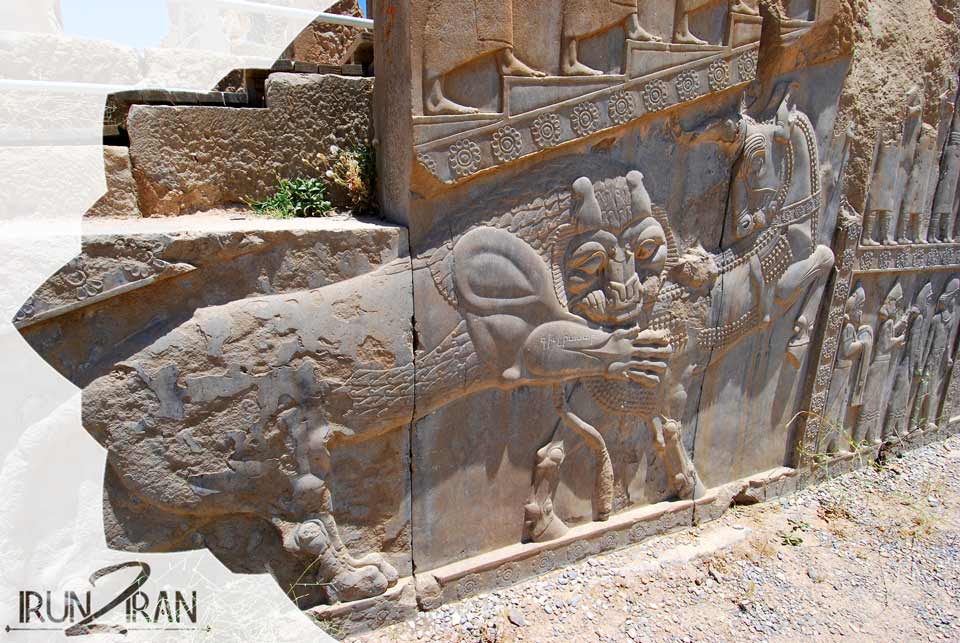
Faq
How far is Persepolis from Shiraz?
Takht Jamshid is located in the center of Fars province, 10 km north of Marvdasht city and 57 km from Shiraz.
Is It Safe To Visit Persepolis?
Although Persepolis is located far from Shiraz as the capital, but there is no worries about your safety for an excursion to visit this monument. The area nearby is well preserved and the safety guards are almost everywhere. If you take a reliable tour or hire a shared taxi, you can make sure to have a safe visit to Persepolis.

